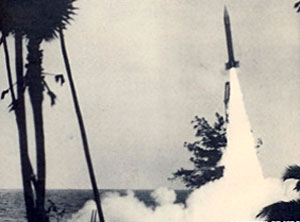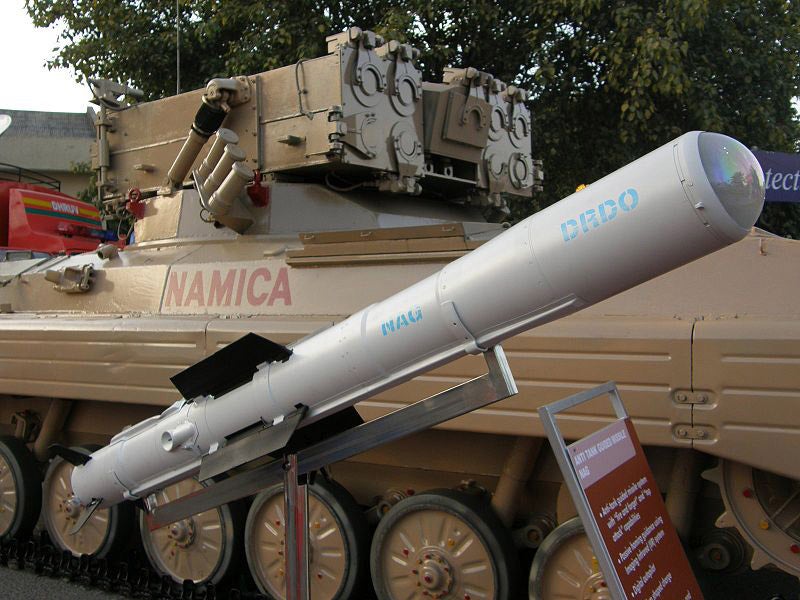Table of Content:-
- Intro
- History and Evolution of India's Missile Programme
- Development of India's Missile Programme
- Capabilities of India's Missile
- Impact of India's Missile
- Conclusion
Intro
India’s missile programme is a proud achievement for the nation. The country’s missile programme has come a long way since the launch of its first rocket in 1963. India’s missile programme has been successful in developing a range of missiles that can cater to various military and strategic needs.
Today, India is among the top nations in the world when it comes to missile development and is considered a key player in the global arms race.
This article aims to provide an in-depth look at India’s missile programme, including its history, development, and achievements.
History and Evolution of India's Missile Programme
 |
| Fig:- Rohini-75 , India's First Space Rocket |
India's missile programme began in the 1960s, with the launch of its first rocket called the Nike-Apache sounding rocket. The programme was primarily focused on developing rockets for scientific research purposes. The first Indian-made rocket was launched in 1972, and it was named the Rohini-75.
The programme received a significant boost in the 1980s when India successfully developed and tested the Prithvi missile. The Prithvi missile is a short-range ballistic missile capable of carrying a nuclear warhead.
 |
| Fig:- Agni V (ICBM) |
The success of the Prithvi missile paved the way for the development of other missiles in India's missile programme. In the 1990s, India successfully tested the Agni series of missiles. The Agni series of missiles are intercontinental ballistic missiles (ICBMs) capable of delivering nuclear warheads to targets located thousands of kilometers away.
The Agni series of missiles are considered a significant achievement for India's missile programme.
Development of India’s Missile Programme
India’s missile programme has been driven by its quest for self-sufficiency in defence technology. Over the years, the programme has achieved several milestones, including the development of the Agni missile series, Prithvi missile series, BrahMos missile, and many others.
 |
| Fig:- Agni Missile Series |
Agni missile series: The Agni missile series is the backbone of India’s strategic missile programme. The series comprises of three missiles, Agni-I, Agni-II, and Agni-III, with ranges of 700 km, 2000 km, and 5000 km, respectively. The Agni missile series has been designed to provide India with a credible deterrent against its enemies.
| Fig:- Prithvi Missile Series |
Prithvi missile series: The Prithvi missile series is India’s first indigenous surface-to-surface missile. The series comprises of three missiles, Prithvi-I, Prithvi-II, and Prithvi-III, with ranges of 150 km, 350 km, and 600 km, respectively. The Prithvi missile series has been designed to provide India with a low-cost, high-precision missile system for tactical battlefield use.
 |
| Fig:- BrahMos supersonic Cruise Missile |
BrahMos missile: The BrahMos missile is a joint venture between India and Russia. It is a supersonic cruise missile with a range of 290 km. The BrahMos missile is one of the most advanced missiles in the world and has been designed to provide India with a significant advantage in naval warfare.
 |
| Fig:- Nag Missile |
Nag Missile: The Nag missile is an anti-tank missile with a range of 4 to 7 kilometers. It is a fire-and-forget missile that can be launched from helicopters, vehicles, and aircraft.
 |
| Fig:- Akash Missile |
Akash Missile: The Akash missile is a surface-to-air missile with a range of 30 kilometers. It is designed to intercept and destroy enemy aircraft and helicopters.
Capabilities of India's Missiles
India's missiles have several capabilities that make them an essential component of the country's defence system. Here are some of the capabilities of India's missiles:
Nuclear Capabilities: India's missiles are capable of carrying nuclear warheads, which act as a deterrent against potential adversaries.
Precision Strike Capabilities: India's missiles have precision strike capabilities, which means they can hit targets with high accuracy.
Multiple Target Engagement: India's missiles can engage multiple targets simultaneously, making them an effective tool in a war scenario.
Range: India's missiles have different ranges, which means they can be used in various military and strategic scenarios.
Mobility: India's missiles are mobile, which means they can be easily moved from one location to another, making them difficult to detect and destroy.
Impact of India’s Missile Programme
India’s missile programme has had a significant impact on the country’s defence preparedness and global standing. The programme has helped India achieve self-sufficiency in defence technology, reducing its reliance on foreign nations for defence equipment.
India’s missile programme has also had a significant impact on the global arms race. India’s development of advanced missiles has forced other nations to develop and improve their missile technology, leading to an escalation in the arms race. However, India has always maintained that its missile programme is defensive in nature and aimed at providing the country with a credible deterrent against its enemies.
Conclusion
Overall, India’s missile programme is a matter of great pride for the country and a testament to its technological capabilities. The programme has helped India achieve self-reliance in defence technology, making the country a significant player in the global arms race.
nice man!!
ReplyDelete